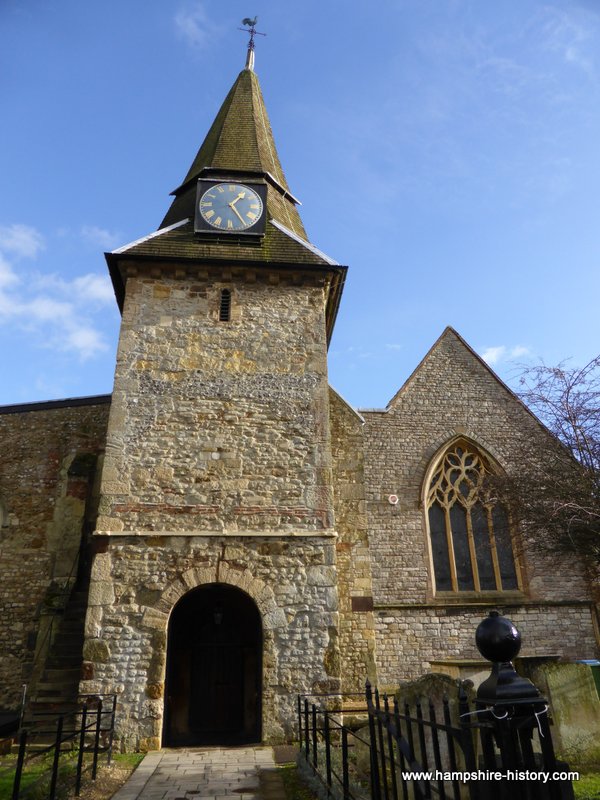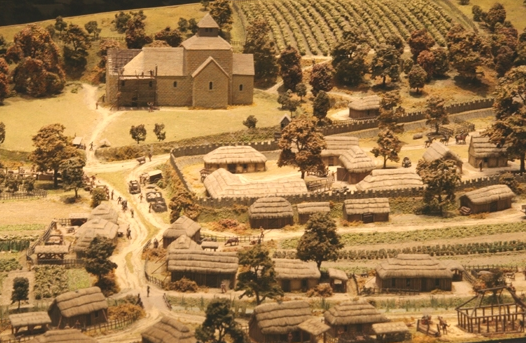A love of the county of Hampshire has to include a love of the ancient churches that litter the river valleys and lost lanes of its past
The early churches of Hampshire seem to be around every corner and turn up in the most unexpected places but exact dating of the oldest part of these churches can be a difficult thing. As part of a Hampshire History project exploring various aspects of Domesday in Hampshire, we thought we needed a better understanding of how to read our ‘church landscape’. Part 1 of this series of posts considered the establishment of Anglo Saxon churches. In this post we prod about in Domesday and examine our own myths, assumptions, misunderstandings, call them what you will, that has impacted our view of the church in the landscape.
Looking at Domesday with the eye of a novice (me)
Domesday is littered with references to churches and a literal read of Domesday would make one suppose that where there is reference to a church there was one and the absence of a reference means there wasn’t. This of course, isn’t the case. Domesday, sometimes known as the Winchester Book or the King’s book, as it was initially referred to, has been perceived as being many things, a tax list, an inventory and valuation of all in England and many other things beside. It is a partial inventory or survey of the country, partial because the Domesday inquest itself, which ran well ahead of the writing of the book, included many other facts about the community surveyed, things such as the number of livestock, which were omitted from the written record.
It was only referred to as the Domesday (Domesdei) book by the native English, who likened it to the day of judgement in the Book of Revelations, that is. it was the book had captured in written form all matters concerning land and ownership that could not be denied in case of controversy.
A quick resume of how the data in Domesday was collected
In Domesday we have a picture, a snapshot of the moment when the commissioner conducted his survey. England was divided into seven circuits of five shires each and the commissioners had a checklist of questions;
- Who held the land in 1066?
- Who holds it now (in 1085)?
- How many people live there?
- How much woodland did it contain?
- How much meadow?
- How much livestock?
- How many mills?
- How many ploughs?
- How many churches?
This data was collected very quickly in a matter of weeks. The data was then taken before shire courts and extraordinary meetings were held, this was the Domesday Inquest and every landholder had to attend and give account of the data he had supplied, to a jury but the critical question was, ‘who owned the land’. Challenges to title were made over and over again until the matter was settled and when all was agreed the results were entered into the Domesday book.
We often consider our Medieval past in terms of the villages and towns in which we live now. We may think of them as evolving out of an earlier, similar Anglo Saxon landscape, with the same structure and form as the current but archaeological evidence suggests otherwise.
Is the answer in the archaeology?
The archaeological record does not show pre-conquest evidence, for defined streets, plot and field boundaries. There is little direct evidence for fixed peasant settlement or manorial structure. What existed seems to have been a more fluid structure which slowly evolved out of a C10th formula for settlement, towards the manorial system and the settlement we recognize as the Medieval village.
Domesday therefore captures a landscape in a state of flux, whose people have been recently conquered. New Lords and new manors evolve, with this context in mind, we have a better chance of understanding what the early churches referenced in Domesday, actually were.
Domesday separated churches into ordinary or superior churches, the latter referencing minsters or collegiate churches. Whether or not a church was referenced in Domesday seems to depend upon a number of factors but primarily the circuit and the local data collection method, the who and how.
Hampshire Domesday Churches
For Hampshire some churches are referenced at the hundred level, others are not. In some, the Royal demesnes are included, others not. Whether a church was included seems also to come down to who was lord of the manor.
Domesday records more churches in Hampshire, Wiltshire and Berkshire with a superior status than almost any other part of the country. This could have been the result of the concentration of wealth and royal lands in Hampshire influencing the number of special churches or minsters.
Hampshire along with Wiltshire and Berkshire was at the centre of the West Saxon kingdom, an area triumphant after the defeat of the Vikings. Some of the pre- Viking churches survived, at Titchfield, Winchester, Romsey, Southampton and Eling. But what happened next, in terms of the foundation of churches is complicated by Royal, aristocratic and monastic interventions in the C10th and C11th.
There are approximately 128 churches recorded for Hampshire (excluding the IOW) and a few caught up in other shires. It is as well to consider Domesday as a fantastic but probably incomplete record of all the churches in Hampshire but with still so much interpretation of Domesday being undertaken, much more to learn about the early church.




